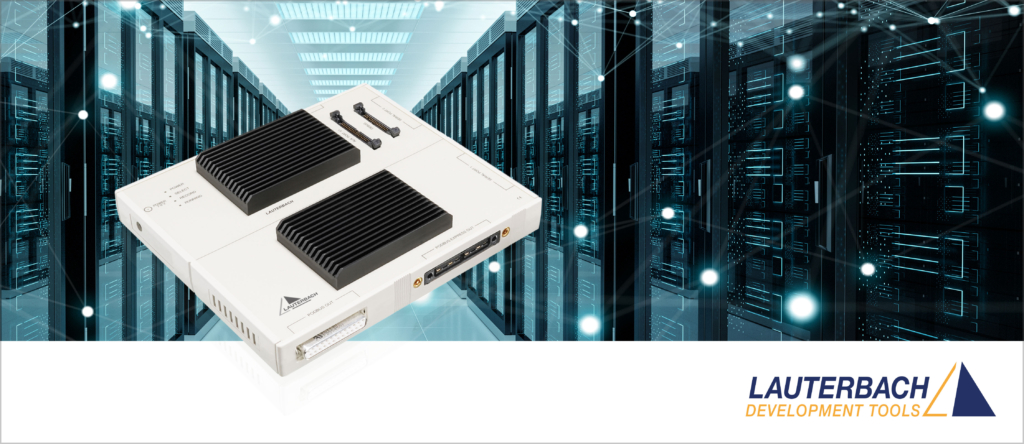LAUTERBACH LAUNCHES NEW POWER TRACE SERIAL 2
NewsRocket Fast Tracing to Launch Projects Faster

With PowerTrace Serial 2, Lauterbach introduces the successor to its market-leading trace tool PowerTrace Serial. Thanks to 8 GB of trace memory, up to 80 Gbit/s bandwidth, and the ability to correlate external signals with the program flow, embedded developers now have unprecedented insights into embedded systems.
Real-time tracing dramatically widens the possibilities to debug and analyze embedded systems: Developers benefit from measuring the executing performance, analyzing race conditions, or proving code coverage. Lauterbach’s new PowerTrace Serial 2 fits perfectly to all high-speed serial trace ports from low lane count and low bit rate up to the highest lane count and fastest bit rate available in the embedded industry.
It supports all chips with serial trace ports and not only the Aurora/HSSTP protocol, but also tracing over PCIe: If a SoC implements no dedicated trace port, but already PCIe, PowerTrace Serial 2 will act as a PCIe endpoint for trace data, applicable for all PCIe generations up to PCIe Gen 3 build-in, or even PCIe Gen 4 in combination with Lauterbach’s PCIe Gen 4 Preprocessor for PowerTrace Serial. In conclusion, engineers save additional interfaces and costly high-speed transceivers.
With the ultra-high bandwidth of up to 80 Gbit/s and sample rates up to 12.5 Gbit/s per lane or even 22.5 Gbit/s in combination with the Aurora 2 preprocessor, PowerTrace Serial 2 allows capturing the program flow, task switches, data of several cores, and other system sources at once in far more detail compared to competing tools and without influencing the system operation. It supports serial trace for Arm® CoreSight™ via HSSTP or Infineon MCDS via AGBT/SGBT and other CPU architectures providing a serial trace interface.
Developers can capture extremely long-term trace recordings by streaming the trace data to the host PC for later analysis. An average streaming speed of up to 400 MB/s ensures a reliable transfer without data loss. The Power Trace’s Serial 2 up to 8 GB large high-speed memory handles even higher trace rates reliably, by buffering large trace data volumes that occur for a short time. It works with all major trace protocols like ETM, PTM, TWP, MCDS and Nexus.
“With PowerTrace Serial 2, developers can easily examine even their fastest and most complex SoCs and embedded systems”, said Norbert Weiss, Managing Director of Lauterbach GmbH. “Once again we show our commitment to accompany our customers to the forefront of technical development”.
To enable a complete view of embedded systems, Lauterbachs Mixed-Signal Probe and PowerTrace Serial 2 allow to record external digital and analog signals and correlate them to the program execution, for Protocol Analysis or Energy Profiling. Instead of optimizing just for speed, developers can now optimize their applications for energy usage, extending battery life, or making their system more sustainable. They can easily locate minimum, mean, and maximum power consumption areas.
As well as sampling the raw signals, Lauterbachs TRACE32 software has built-in support for analyzing a number of industry-standard protocols, such as ASYNC (RS232), CAN, I2C, I2S, SPI, JTAG, and SWD. It’s even possible to add support for proprietary protocol analysis by using the provided API to construct a shared library or DLL to manage the signal data and display it anyway.




